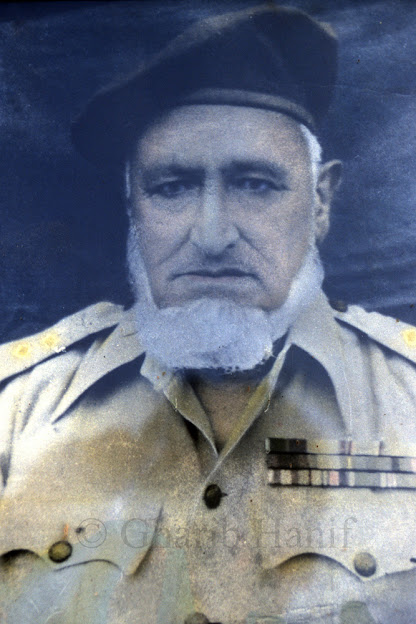Hast-o-Bood Part-20
Chapter IV
Historical background and brief overview of the state of Jammu and Kashmir
Historical background and brief overview of the state of Jammu and Kashmir
According to another tradition[1], a giant named Keshp existed in the time of Hazrat Sulayman (as). When Hazrat Sulaiman (as) came here for sightseeing and entertainment, he liked Sati Sar Lake and the snow-capped mountains around it very much. So they decided to settle people in this place. To carry out his plan, he ordered the tortoise to dry the water of Lake Sati Sar. Who cut the mountain from the place of Baramulla and poured the water of the lake from various places into various streams and thus these people were settled on this dry land.
On the contrary, it is said that in the time of Hazrat Sulaiman (as) a fairy named Mir was fascinated by a giant named Kashf. Which brought her to mind. He appealed to the Prophet Solomon in this regard. Hazrat Sulaiman (PBUH) said to this giant who had seen this charming region during his tourism that if you drain the water of Lake Sati Sar, you will get Gohar Maqsood. So Kashf Deo cut down the mountain and poured out all the water of the lake and by the order of Hazrat Sulaiman (as) on this land human population came into existence. Thus Kashf Deo got the demise of Mir Pari. The place was named Kashf Mir or Kashmir after their names. Srinagar, the capital of the state of Kashmir, was later settled by Raja Prosin around one to three AD.
No matter what happens, everyone agrees on the fact that Kashmir was initially a vast lake under Sati Sar, after which it dried up and Kashap Rishi brought Brahmins and Yaksh people from the adjoining areas and settled here. ۔ The Brahmins were engaged in the work of Dharma and Gyan, while the Yaksha were pistachio-sized, warriors, high-spirited and powerful people, and were adept at demonstrating their military prowess. The Brahmins always bowed to them and offered them offerings and presents to protect them. Thus, despite the passage of thousands of years [2], the same character is still kept alive in Kashmiri Pandit families as an ancient ritual, so that the 15-month-old Pooh is cooked in a khuchdi and put in an empty pot and kept outside the house in the evening. May the Yaksh nation accept this gift of theirs and may the Brahmins and their families be safe and secure from worldly calamities and calamities.
Thus began the human population in the region. From the beginning of humanity till the year 1322, five hundred and thirty-seven kings of more or less twenty-one families ruled the state. For the first time in the year 1323, Zulqadar Tatari [3] marched towards the area with 70,000 troops and made it a place of massacre and looting. Later, in the year 1324 [4], the defeated Raja Sehdev, accompanied by his trusted minister Ram Chand, left the capital along with his other ministers and hid in the mountains for fear of an alleged re-attack by the Tartars. Then he went to Kishtwar. At the same time, two persons from the adjoining state of Tibet had arrived in Kashmir in a state of cosmopolitanism. Among them was Richen Shah, who came with his brief entourage. When they found Shah Dev and his followers missing, they first occupied the capital and later took over the government and ruled the whole country. Thus, for the first time, a foreigner who came out of the country became a Buddhist ruler. [5]. Richen Shah was curious about religion. Shujai's quest gave him a new determination one day. He vowed in his heart that whoever saw him the next morning would adopt his religion. By the power of Allah, in the morning, his eyes fell from the window of his palace towards the river where on the bank of the river he found a man worshiping in a strange way. Sending his servant, Richen Shah called the man and asked him several questions about his faith and religion. This man was a noble saint, Tariqat, Zahid and Muttaqi Sharafuddin alias Bulbul Shah. Who preached the golden principles of Islam to the king and at the hands of the righteous, Reichen Shah Musharraf converted to Islam. The king's Islamic name was Sadruddin Badshah. After the conversion of the king to Islam, his princes and ministers also enlightened their acceptance with this happiness. And a large number of subjects converted to Islam. Thus, in the year 1324, Islam emerged as the Shahi religion in the state of Kashmir.
to be continued .....
[1] Tales of Kashmir Martab Muhammaduddin Fook Page No. 42
[2] History of the Nations of Kashmir Volume III, by Muhammad-ud-Din Fauq and Museums of Kashmiri Castes by Muhammad Abdullah Qureshi Page No. 307.
[3] History of Kashmir Volume I Conditions Rajgan Hindu Author Muhammad-ud-Din Fauq, Page 270
[4] History of Kashmir Volume I, Author Muhammaduddin Fook Page No. 274
[5] Great Iran and Small Iran, edited by Muhammad Abdullah Qureshi Page No. 19
[2] History of the Nations of Kashmir Volume III, by Muhammad-ud-Din Fauq and Museums of Kashmiri Castes by Muhammad Abdullah Qureshi Page No. 307.
[3] History of Kashmir Volume I Conditions Rajgan Hindu Author Muhammad-ud-Din Fauq, Page 270
[4] History of Kashmir Volume I, Author Muhammaduddin Fook Page No. 274
[5] Great Iran and Small Iran, edited by Muhammad Abdullah Qureshi Page No. 19
The blogger does not necessarily agree with the text of the book.



Comments
Post a Comment